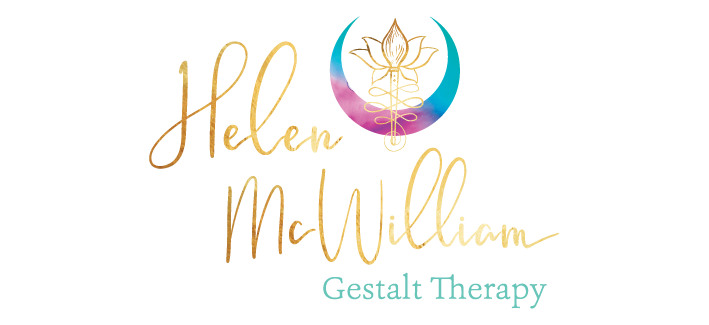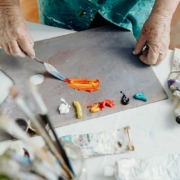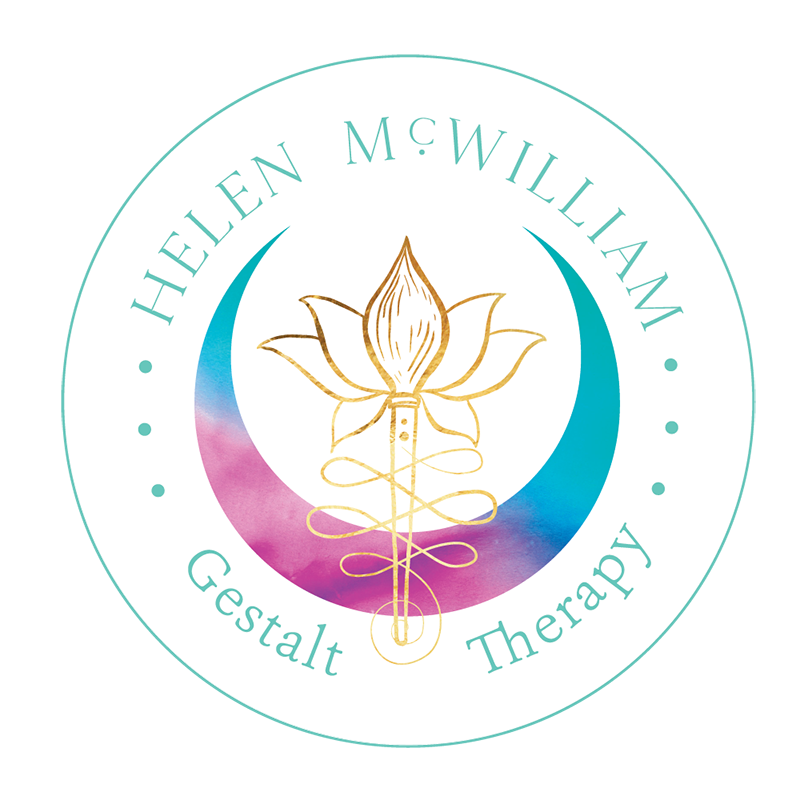Numbing to Knowing: Healing Trauma and Addiction through Gestalt Art Therapy
Understanding Trauma & Addiction
Many people experience suffering in their lives, whether due to a difficult childhood, illness, or a traumatic event such as a horrific car accident. One common response to trauma is addiction—whether to food, alcohol, or other substances—something that provides relief or pleasure, numbing the pain. There is nothing inherently wrong with someone who turns to these coping mechanisms; it is simply an attempt to solve a problem. This understanding shapes my approach to suffering and trauma in my Gestalt Art Therapy practice.
Core concepts of Gestalt therapy include a here-and-now focus, awareness, wholeness, experimentation, and dialogue. Gestalt therapy emphasizes staying in the present moment. Using art in therapy helps clients externalize and explore their current thoughts, feelings, and experiences through creative expression. This process includes addressing intrusive thoughts, memories, and future anxieties. In this way, Gestalt art therapy supports emotional healing through awareness, embodiment, and creativity.
The Neuroscience of Trauma and Connection
Neuroscience has significantly influenced my thinking and ways of working. The parts of the brain involved in addiction are also responsible for love, connection, and a sense of vitality. Human brain development begins in the womb, where stress experienced by the mother releases hormones that impact the child’s developing brain. Even before birth, the unborn baby is exposed to stress. As the child grows, additional stressors—such as a busy parent unable to provide consistent attention—can further shape their neurological development.
Personal Story and Reflection
I was the second of three children. When my brother was one month old and I was 18 months, my mother suffered the first of what was then diagnosed as a nervous breakdown. Decades later, I see myself as one of the many walking wounded. By the age of 16, I was smoking six cigarettes a day. By 30, that number had grown to 60. When I finally quit smoking, I turned to food for comfort and gained weight. Now, I recognize that I am not alone in this struggle—many of us seek ways to relieve our suffering and reconnect with ourselves.
Over the years, I have suppressed my healthy anger. For example, as a child when my mother was hospitalized, I was always sent away to stay with family friends, unlike my brother who stayed home with my dad. I didn’t feel safe enough to express my hurt and anger at being treated differently. To make myself feel better, I learned to suppress my anger, my struggles with belonging, and my discomfort around difference. I even ridiculed others who seemed different, in an attempt to feel more in control. This lack of compassion is neither helpful nor healing.
Like many others, I was conditioned to prioritize the emotional needs of others over my own, suppressing my authentic self. Why do we do this? Because, as humans, we cannot survive without attachment to our caregivers. As we grow and develop, we crave both connection and self-expression, yet we often wrestle with choosing between them. Looking back, I realize that some of my best decisions came when I trusted my instincts rather than what I perceived were others’ expectations or the ‘right way’ to act. As Dr. Gabor Maté says, “The essence of trauma is the tension between the need for acceptance and the need for authenticity.”
Parenting, Intergenerational Patterns, and Responsibility
When parents are under stress, the validation of authenticity is often sacrificed—not through deliberate harm, but through inattention. As a parent, I recognize that I was sometimes emotionally unavailable to my children. Were they accepted, validated, and celebrated enough? Were their emotions truly heard and understood? The lack of acceptance and validation is what ultimately separates us from ourselves. This is the essence of trauma—the tension between the need for acceptance, which ensures survival, and the need for authenticity, which fosters vitality and growth.
I do not blame anyone, nor do I believe in carrying guilt. Instead, I advocate for taking responsibility for healing once we understand what is happening. This journey is deeply personal, yet we do not have to undertake it alone, even if it sometimes feels that way.
At various points in my life, I’ve asked: How do I stop tuning out to protect myself from stress? I’ve come to understand that I was numbing myself. I now know that I do not suffer from a genetic disease. While my mother was diagnosed with nervous breakdowns and hospitalized multiple times, today, her suffering would likely be understood and treated differently. My brain developed coping mechanisms that, while initially protective, later indicated the need for change. Regular therapy has been instrumental in my healing. I take better care of my body, practicing mindfulness, yoga, and strength training to stay attuned to my needs.
One lingering question remains: Is there a genetic component to my experience of coping with life’s challenges? My anxiety? My tendency to tune out under stress? What I do know is that society is more stressed than ever, in part due to the erosion of extended family support systems. This was my mother’s reality as well. What may be genetic is sensitivity. The more a sensitive child suffers, the more they disconnect. They experience a heightened reaction to external stimuli. Looking back, I see what happened, accept it, and carry my doubts and awareness without the need for justification.
The Healing Path: Art, Embodiment, Therapy, and Play
What I have learned—both personally and in my therapy practice—is that we are hardwired for emotions such as anger, grief, and fear. But we are also wired for joy and play. In the final stages of life, people often express regrets about not having played more. That is why, in my Gestalt art therapy practice and daily life, I create space for art, for playing with colour, for movement, and for celebration. Healing isn’t linear, but it is possible—and it begins with awareness, creativity, and the courage to reconnect.
References
Elbrecht, C. (2019). Healing trauma with guided drawing: A sensorimotor art therapy approach to bilateral body mapping. North Atlantic Books.
Levine, P. A., & Frederick, A. (1997). Waking the tiger: Healing trauma. North Atlantic Books.
Maté, G., & Maté, D. (2022). The myth of normal: Trauma, illness, and healing in a toxic culture. Avery.
Rothschild, B. (2000). The body remembers: The psychophysiology of trauma and trauma treatment. W. W. Norton & Company.


